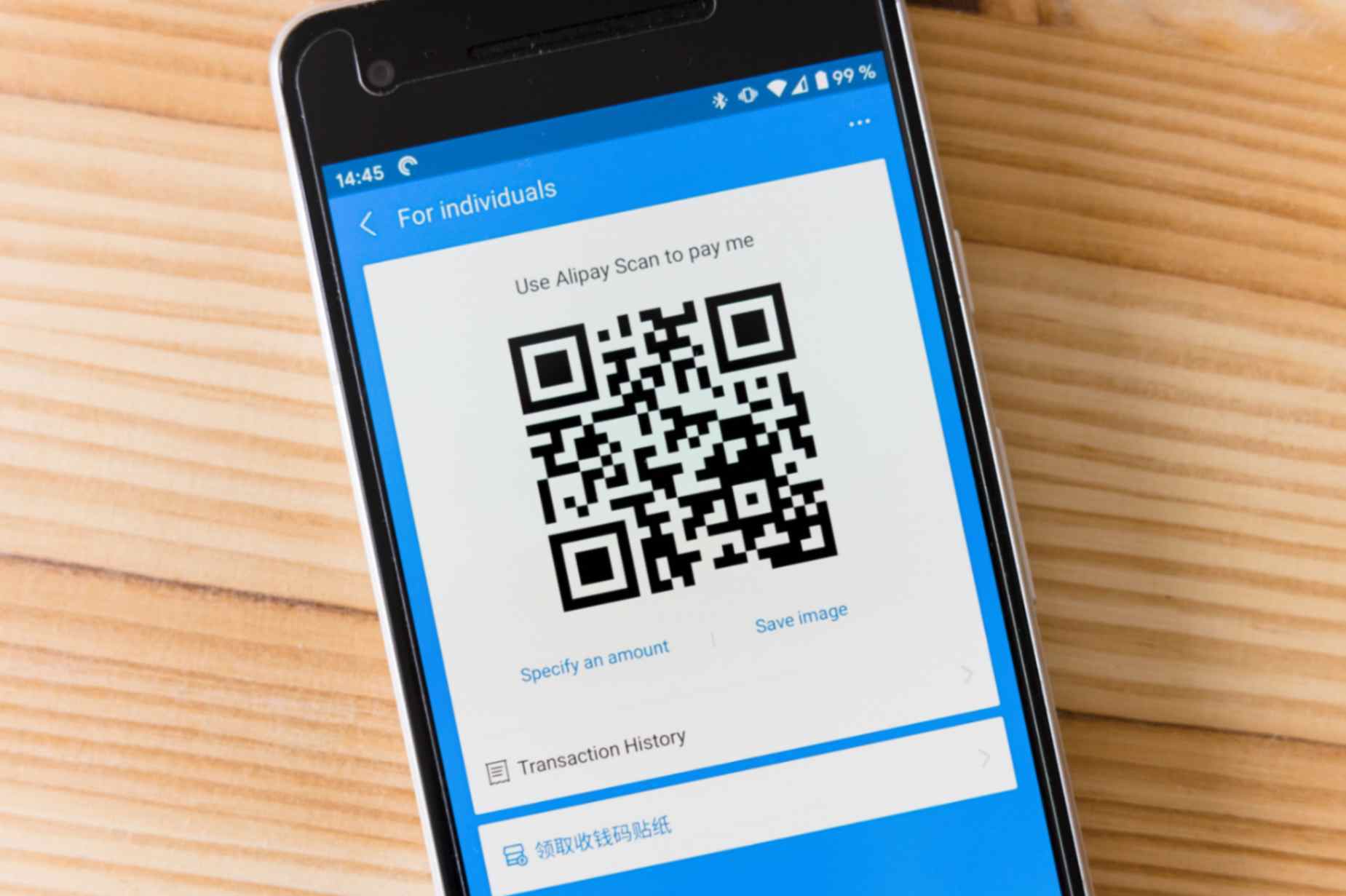New Year, New QR Code Strategies for Businesses
Jonathan Palley
Jan 3, 2024
The ever-evolving landscape of technology and consumer behavior demands that businesses adapt and innovate to stay ahead. One of the indispensable tools in this journey toward success is the humble QR code, an unsung hero that has quietly revolutionized the way businesses interact with their clientele. In this dynamic era, it's not just about having a QR code; it's about leveraging it strategically to unlock a realm of possibilities.
QR codes, or Quick Response codes, have come a long way from their origins in the automotive industry. In a world where consumer expectations and technological advancements are in constant flux, businesses that embrace change are the ones that thrive. The beginning of a new year marks the perfect opportunity to reevaluate, refine, and rejuvenate your approach to QR code implementation.
Whether you're a seasoned entrepreneur or a burgeoning startup, the potential benefits of incorporating new QR code strategies into your business model are vast and varied.
Importance of updating strategies for the new year
What's at stake?
The stakes have never been higher. Businesses that effectively integrate QR codes stand to gain not only in terms of enhanced customer engagement and streamlined processes but also in valuable data collection and analytics. As we navigate through the challenges and opportunities of 2024, the businesses that seize the potential of QR codes will find themselves better positioned for success in an increasingly competitive market.
Understanding the Current QR Code Landscape
The use of QR codes has transcended its initial purpose, becoming a ubiquitous tool across various industries. It plays an integral part of marketing, product packaging, and service delivery. From the hospitality sector, where contactless menus and check-ins have become the norm, to retail, where QR codes facilitate seamless transactions, businesses are increasingly relying on these square patterns to enhance user experiences.
In terms of marketing, for example, QR codes have evolved beyond mere links to websites. Creative campaigns now leverage QR codes to unlock exclusive content, initiate app downloads, or provide instant access to promotions. Businesses that recognize the versatility of QR codes find themselves with a powerful tool to bridge the gap between their physical and digital presence.
As technology advances, so too do the capabilities of QR codes. Beyond their traditional static forms, dynamic QR codes are gaining traction, enabling real-time updates and customization. Augmented reality (AR) integration is on the horizon, promising immersive experiences triggered by a QR code scan.
Furthermore, businesses are exploring the use of QR codes in loyalty programs, gamification, and personalized marketing efforts. Understanding and capitalizing on these emerging trends will be paramount for businesses seeking to stay ahead in the QR code game.
Benefits of Utilizing QR Codes in 2024
It's imperative for business owners to recognize the benefits that stem from strategically incorporating QR codes into their operations. They are potent tools that can catalyze growth and elevate customer experiences. Here are some of their benefits:
Enhanced Customer Engagement and Interaction
In an era where consumer attention is a prized commodity, QR codes offer a direct and instantaneous channel for engagement. Creative implementations, such as interactive campaigns or immersive content experiences, can captivate audiences and foster a stronger connection between your brand and your customers.
Imagine a customer scanning a QR code on your product packaging and being instantly transported to a behind-the-scenes video showcasing the making of the product. This not only adds a layer of transparency but also creates a memorable brand experience, fostering loyalty and positive associations.
Streamlined Processes and Improved Operational Efficiency
QR codes are also useful for promoting operational efficiency. From inventory management to point-of-sale transactions, these codes streamline processes, reducing friction and potential errors. In the retail sector, for instance, implementing QR codes for quick and secure payments not only expedites the checkout process but also aligns with the increasing preference for contactless transactions.
Moreover, QR codes facilitate seamless information exchange. Embedding them in product manuals or packaging allows customers to access relevant information swiftly, reducing the need for extensive printed materials and providing an eco-friendly alternative.
Cost-Effective Marketing Tool
In comparison to traditional marketing channels, implementing QR codes can be a cost-effective strategy. Whether used in print materials, packaging, or digital campaigns, QR codes provide a direct link between the physical and digital worlds without the need for extensive resources. This affordability makes QR codes an attractive option for businesses, especially smaller enterprises looking to maximize their marketing impact on a budget.
Data Collection and Analytics for Informed Decision-Making
Smart business decisions hinge on data, and QR codes are a gateway to valuable insights. By tracking QR code scans and user interactions, businesses can gather data on consumer behavior, preferences, and engagement patterns. This data-driven approach enables informed decision-making, allowing businesses to tailor their strategies based on real-time feedback.
For example, a restaurant leveraging QR codes for feedback surveys can quickly assess customer satisfaction levels and make timely adjustments to enhance the dining experience. In the competitive landscape of 2024, the ability to adapt swiftly based on data-driven insights can be a game-changer.
Cross-Platform Compatibility
QR codes are platform-agnostic, ensuring compatibility across a myriad of devices and applications. This universality contributes to a seamless user experience, allowing customers to engage with your content or services regardless of their device or preferred platform. Cross-platform compatibility is essential in an era where consumers use a diverse range of devices, ensuring that your QR code strategies reach a broad audience without technological barriers.
QR Code Integration Across Different Business Functions
Now that we've explored the overarching benefits of QR codes, let's delve into specific ways these versatile tools can be seamlessly integrated across different business functions. From marketing endeavors to sales transactions and customer service initiatives, QR codes have the potential to revolutionize the way your business operates.
Marketing and Advertising
- Innovative QR Code Campaigns: QR codes are not just static links; they can be the gateway to innovative marketing campaigns. Create QR codes that lead to exclusive content, sneak peeks, or limited-time promotions. Encourage customers to scan codes in your advertisements, transforming passive viewership into active engagement.
- Connecting Offline and Online Marketing Efforts: Bridge the gap between your physical and digital marketing efforts by incorporating QR codes into your offline materials. Whether on print ads, brochures, or packaging, these codes can seamlessly direct customers to your online platforms, creating a cohesive brand experience.
Sales and Transactions
- Seamless Mobile Payments and Transactions: Simplify the payment process by implementing QR codes for mobile transactions. From retail purchases to service payments, QR codes offer a secure and quick method, enhancing the overall customer experience. Integration with popular mobile payment apps ensures widespread accessibility.
- QR Codes in E-Commerce: In e-commerce, QR codes can streamline the shopping journey. Consider incorporating QR codes on product pages for quick access to detailed information, reviews, or even the option to add items directly to the shopping cart. This facilitates a frictionless and efficient online shopping experience.
Customer Service and Support
- Product Information and Support Documentation: Enhance customer support by integrating QR codes into product packaging or manuals. Customers can scan the code for instant access to product information, usage guidelines, and troubleshooting tips. This not only reduces support queries but also empowers customers to find answers independently.
- QR Codes in Customer Feedback and Satisfaction Surveys: Gather valuable insights by incorporating QR codes into feedback and satisfaction surveys. Post-purchase, encourage customers to provide feedback by scanning a QR code linked to a user-friendly survey. This real-time data collection allows you to understand customer sentiment and make improvements swiftly.
Best Practices for Implementing New QR Code Strategies
Implementing QR code strategies requires thoughtful planning and execution to ensure optimal results. As we embark on this journey to revamp your approach in 2024, consider these best practices to maximize the effectiveness of your QR code integration.
- Design for Visibility: Ensure that your QR codes are designed with clarity and visibility in mind. Opt for high contrast and sufficient size to facilitate easy scanning.
- Testing Across Devices: QR codes should be universally accessible. Test your codes across a range of devices and QR code scanning apps to guarantee compatibility for all users.
- Mobile Optimization: Recognize that the majority of QR code scans occur on mobile devices. Therefore, ensure that the linked content is optimized for a seamless mobile experience.
- Secure Code Generation: Utilize reputable QR code generators to ensure the integrity and security of your codes. Avoid using generic or easily guessable codes to prevent unauthorized access.
- Transparent Data Usage Policies: Clearly communicate how customer data obtained through QR codes will be used. Establish trust by implementing transparent data usage policies and assuring customers of the security measures in place.
- Regular Security Audits: Conduct periodic security audits to identify and address potential vulnerabilities. Stay vigilant in safeguarding both your business and your customers from potential security threats.
- Engage with QR Code Technology Providers: Collaborate with established QR code technology providers to stay abreast of the latest advancements. For instance, you can leverage QR Code Generator Hub’s expertise to enhance the functionality and security of your QR code strategies.
- Stay Informed on Industry Standards: The world of QR codes is continually evolving. Stay informed about industry standards and emerging technologies to ensure your strategies remain at the forefront of innovation.
- Iterative Adaptation: QR code strategies are not static; they should evolve alongside technological advancements. Adopt an iterative approach, regularly reassessing and adapting your strategies to align with the ever-changing landscape.
By adhering to these best practices, your business can confidently navigate the implementation of QR code strategies, fostering a secure and engaging environment for both you and your customers.
Conclusion
As you venture into 2024, armed with innovative QR code strategies, remember that success lies not just in adopting new technologies but in crafting experiences that resonate with your audience. QR codes are not merely tools; they are enablers of meaningful connections, bridging the physical and digital realms to create a seamless and immersive customer journey.
In this age of technological acceleration, collaboration with reliable technology partners, adherence to security best practices, and a commitment to staying informed about industry standards will be paramount. Your QR code strategies should not be static; they should evolve alongside the ever-changing landscape of technology and consumer expectations.



